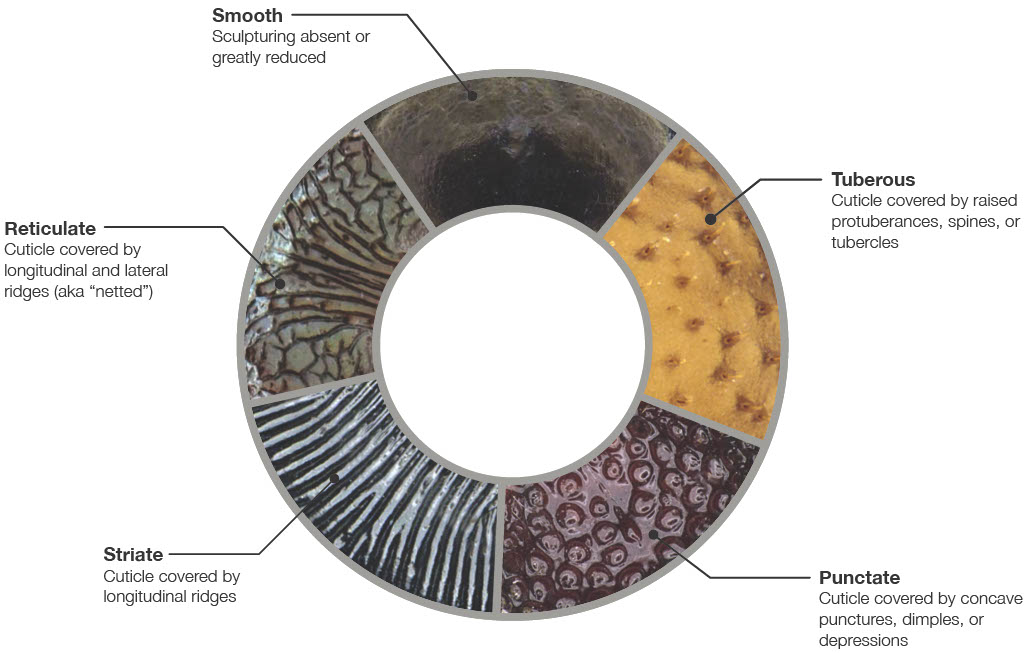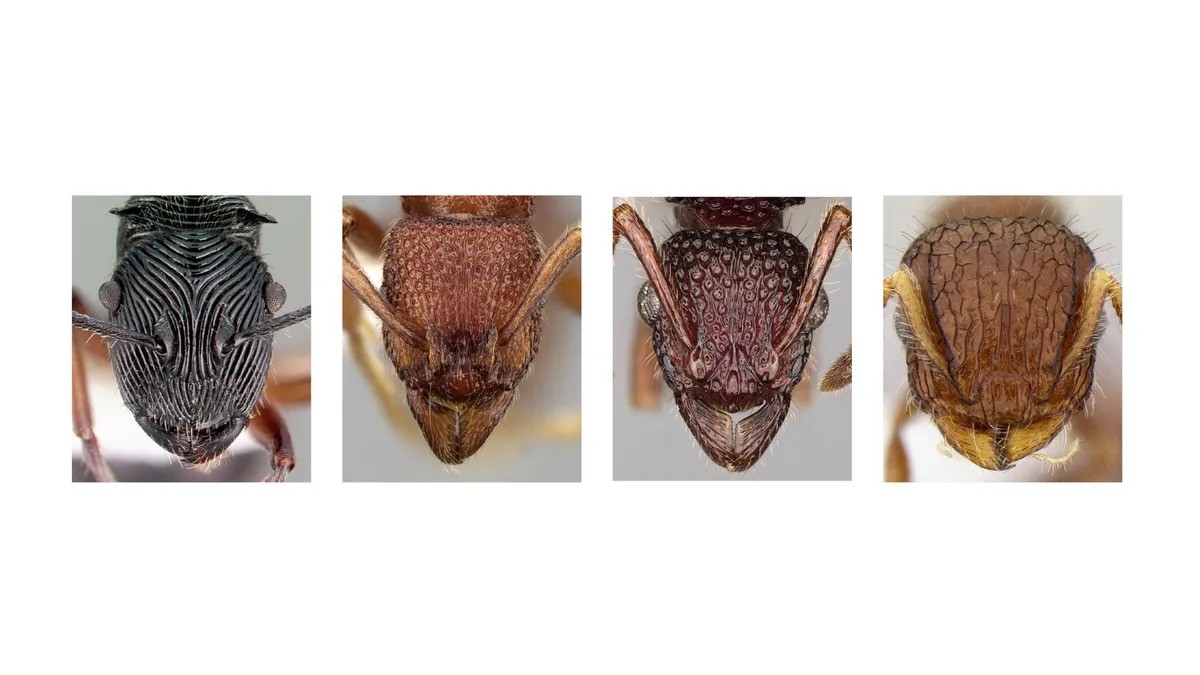During the COVID-19 pandemic, many people took up different hobbies as lockdown restrictions forced schools to close and people to stay inside their homes. While some took up crafts or yoga, one entomologist got his students involved in a rather different kind of lockdown project: studying the facial patterns of ants.
The project started at Kennesaw State University in Georgia and is the brainchild of entomologist Clint Penick, who got his students taking close-up images and looking in detail at the facial patterns of more than 11,000 species of ants. The photographs, while each fascinating in their own right, began to reveal patterns and the idea that the different textures and patterns found on the ants’ faces could offer some kind of benefit to their survival.

Over 11,000 images were classified into these five broad groups based on their facial micro-sculpting.
Image Courtesy of Dr Clint Penick
For instance, some species of soil-dwelling ants possess raised facial ridges that are so close together that sand grains can’t fit between them, said Penick in a statement seen by Science News. This could suggest that the ridges protect the ants from scratches and marks to the skin from climbing through rough substrate.
Ant faces are incredibly detailed and varied, so much so that there are more than 150 terms to describe the different facial details. The images helped Penick come up with his own, more broad categories for the facial patterns – smooth, reticulate, striate, punctate, and tuberous – which helped classify 11,739 images of ants. This classification system helped answer questions such as why different patterns evolved and what role they could play in ant behaviors.

Only four of the 11,000 plus images that feature in the study.
Image Courtesy of Dr Clint Penick. Photographs taken by Polyrhachis decora (April Nobile), Stictoponera taivanensis (Shannon Hartman), Stictoponera biroi (Z. Lieberman), and Romblonella scrobifera (Michael Branstetter)
The team refer to the facial patterns as micro-sculpting and suggest that there is strong evidence that smooth was the ancestral state of most ant faces. They found that there was evidence of the other four states evolving multiple times throughout ant evolution and that the tuberous micro-sculpting pattern was the least common. This pattern was mostly found in ants that belong to the tribe Attini, which are fungus-gardening species.
While the researchers are not 100 percent sure on the role of these different micro-sculpting patterns for the ants, they suggest they could provide abrasion reduction, help prevent the ants from losing moisture, influence communication, and even affect the interactions between the ants and different microbes they come into contact with.
Given that a single gram of soil may contain 10 billion microbes, having a face that is not smooth and instead consists of grooves could disrupt the growth of biofilms in the same way as has been observed on the rough surface of shark denticles.
For further research, the team suggest comparing species-level micro-sculpting patterns that could help work out the pressures that caused these different facial intricacies to develop.
The paper is published in Myrmecological News.
Source Link: Ants' Intricate Face Patterns May Offer Surprising Benefits, Study Of 11,000 Photos Reveals